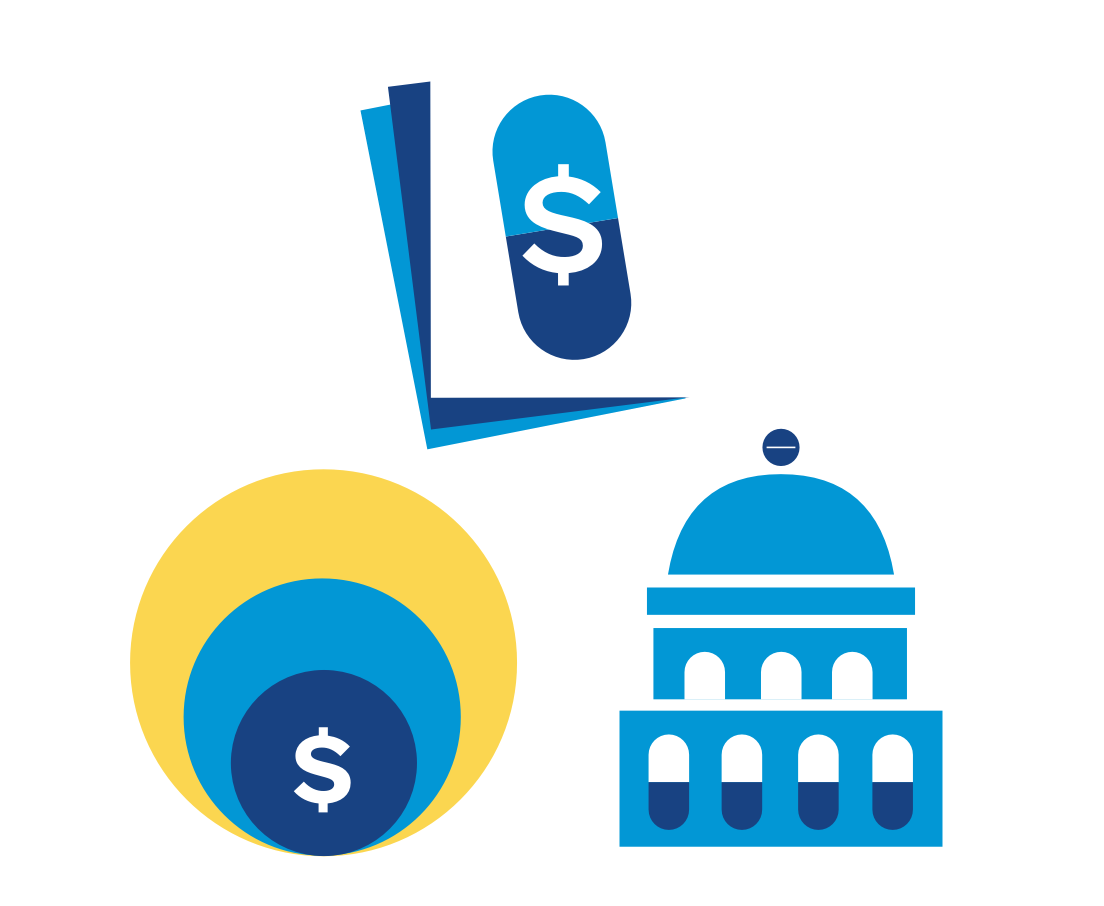Pricing Tutorials
Navigate the various pathways in our Pricing Tutorials to learn how the US drug pricing and reimbursement system works.
Which drugs would you like to learn about?
There are two ways a patient can get a prescription drug: from the pharmacy or at an outpatient clinic, such as a physician's office. Explore how pharmacy-dispensed drugs and clinician-administered drugs are purchased and reimbursed in the US. Despite their differences, both pathways create incentives that may distort drug prices in ways that do not align with their value.
Access All of the Features
See more on the desktop version. Send yourself an email reminder.
Request a ReminderThe Key Stakeholders
Drug Transactions: Annual Retained Revenue*
Less
More
Pharmaceutical Company
Retained Revenue
$323B
Step 1
Step 1
Rebate
Step 2
Pharmacy Benefit Manager (PBM)
Retained Revenue
$23B
Step 6
Rebate
Step 5
Health Insurer
Retained Revenue
$8.6B
Commercial
Government
Wholesaler
Retained Revenue
$17.7B
Step 2
Step 3
Pharmacy
Retained Revenue
$73B
Step 3
Step 4
Patient
Retained Revenue
* Source: Retained revenue for each stakeholder includes both pharmacy-dispensed and clinician-administered drugs. IQVIA Medicine Use and Spending in the U.S., 2016 (manufacturers' net revenue); Health Affairs Blog, "Spending on Prescription Drugs in the U.S.," 2018 (estimated gross profits for supply chain intermediaries, 2016).
Drug Transactions: Annual Retained Revenue*
Less
More
Pharmaceutical Company
Rebate
Step 1
Step 1
Health Insurer
Commercial
Government
Step 4
Wholesaler
Step 2
Step 2
Outpatient Clinic
Step 3
Step 3
Patient
* Source: Retained revenue for each stakeholder includes both pharmacy-dispensed and clinician-administered drugs. IQVIA Medicine Use and Spending in the U.S., 2016 (manufacturers' net revenue); Health Affairs Blog, "Spending on Prescription Drugs in the U.S.," 2018 (estimated gross profits for supply chain intermediaries, 2016).
Terms You Might Hear
Industry language can be confusing. Visit our glossary or search for specific words below.
Explore Our Insights
We conduct non-partisan, independent research. Browse our featured research or explore our work by article type.
Explore Research & Insights